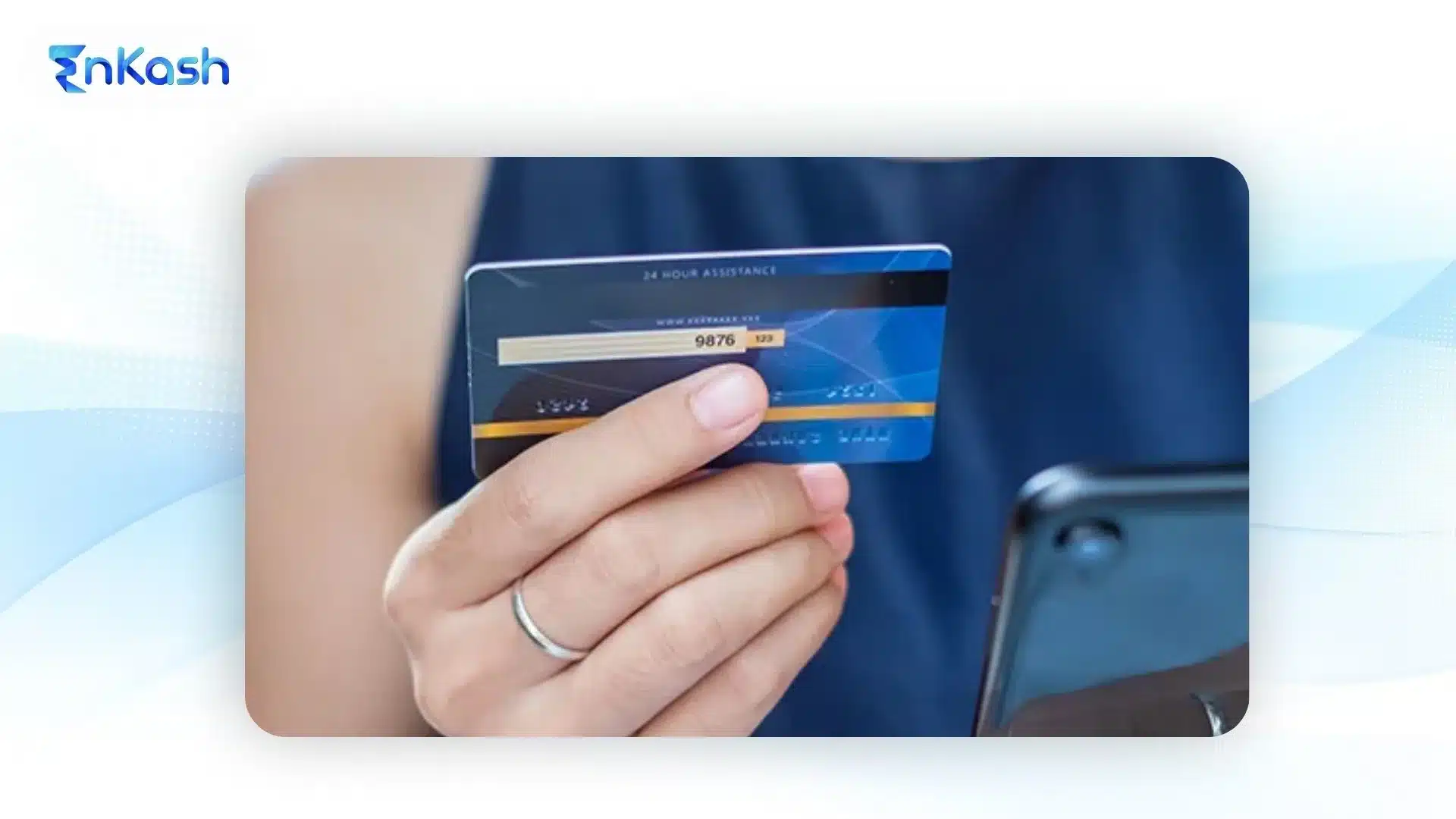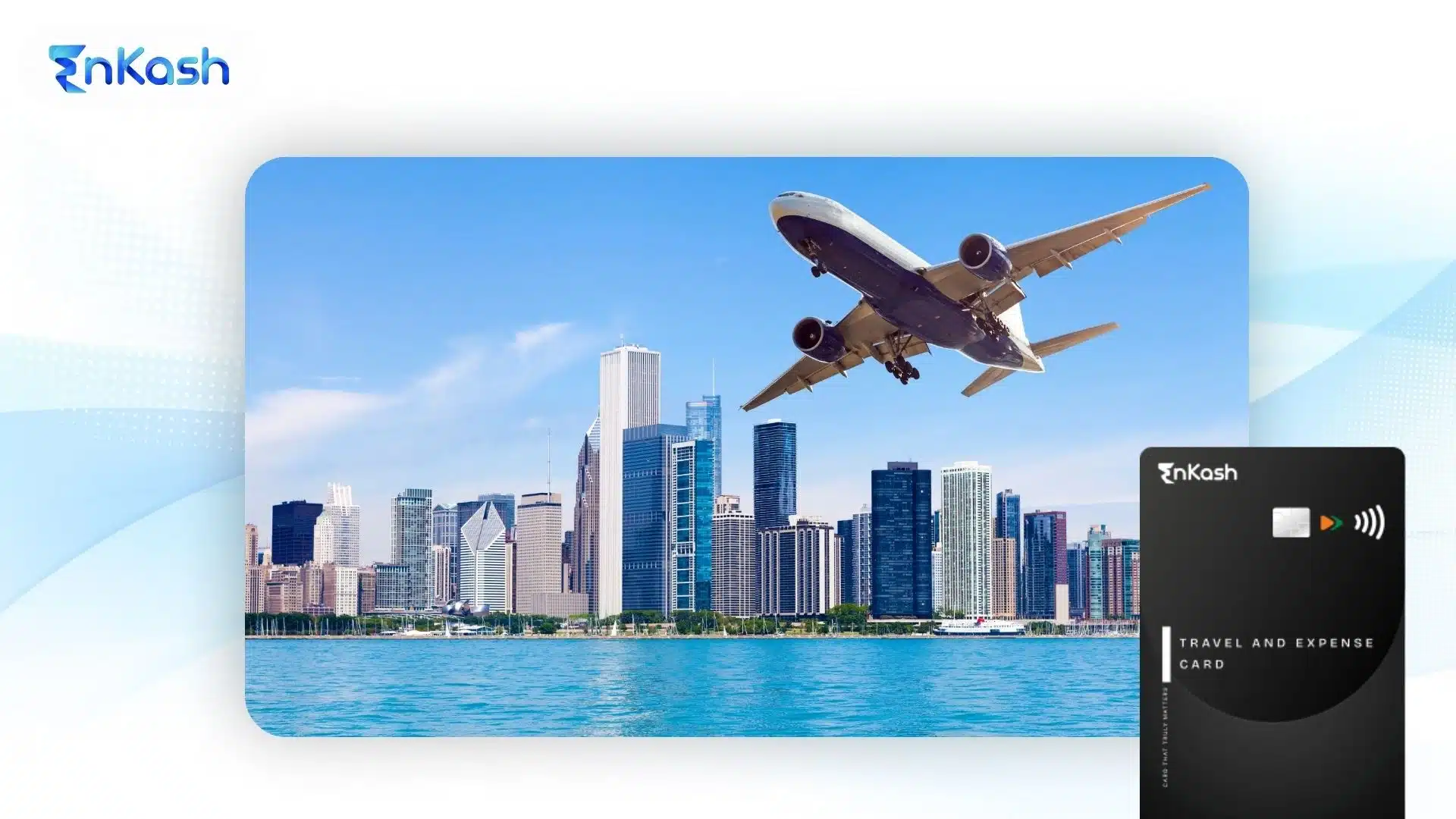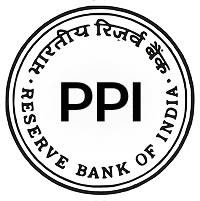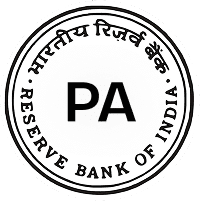Introduction
Prepaid cards can be a smart and secure payment option in India’s digital economy when backed by robust security features and responsible usage. Whether paying for online purchases, managing business expenses, or just budgeting, prepaid card options, especially with the virtual prepaid card version in India, offer freedom from credit risk and reduce dependency on traditional bank-linked payment methods. These cards are available as reloadable prepaid cards, Visa prepaid cards, RuPay prepaid cards, and even free prepaid card solutions for students, freelancers, and businesses. The blog examines how prepaid cards work and what advantages they offer to help you make the best choice for your needs. This is being spearheaded by fintech platforms such as EnKash, which master smart card-based expense solutions.
What Is a Prepaid Card and How Does It Work in India?
India’s fast-changing digital payments environment has seen a rise in opportunities for prepaid cards to resolve day-to-day issues for individuals and businesses. However, before opting for the virtual option, it’s important to understand what a prepaid card is and how it works. A prepaid card is a payment card preloaded with money, so the user can only spend the amount that has already been loaded onto it. In contrast, a debit card or a credit card is associated with a savings account or a credit line. It represents a secure, economical tool for controlling expenses. The Indian prepaid card is accepted for online transaction processes, shopping for goods, bill payments, and even ATM cash withdrawals (only applicable for physical prepaid cards with ATM support, not virtual cards). Leading banks and fintech service providers, including EnKash, Paytm Payments Bank, Fi, and more, provide prepaid card services in both physical and virtual forms. The virtual prepaid card in India is particularly handy when having to make secure online payments in the blink of an eye.
One of the primary advantages of prepaid cards is accessibility. Because they require no credit history or linked bank account, they are ideal for students, gig workers, and freelancers. Users can get started with minimal KYC limits, but full KYC is required for higher limits as per RBI regulations.. Especially when it comes to budgeting, users can load the exact amount they want to spend on the card and use it across platforms without fearing overspending. Businesses get to use prepaid cards for reimbursing expenses or granting travel allowances to employees, and setting marketing and procurement budgets within a controlled capacity, providing access to funds to be used by teams. Most prepaid cards in India today are rechargeable ones, meaning that users can top up their cards occasionally, turning the card into a long-term expense management choice. Prepaid cards can be used for almost anything: from paying for groceries, fuel, and concerts, to managing outgoing payments and OTT subscriptions. The basic principle is to keep the user in control while keeping them away from debt.
Why Virtual Prepaid Cards Are Gaining Popularity in India
With digital payments pushing through, virtual prepaid cards in India are booming. These cards are similar to payment cards in operation, except that they are issued digitally and exist solely in digital form. After activation, the user receives a 16-digit card number along with a CVV and an expiry date that can be used to make payments for any online transaction-global scope, including online shopping and subscriptions, among others. Instant virtual card issuance is possible through platforms like EnKash, thus allowing real-time card creation and usage for businesses and individuals alike. That makes them perfect for very urgent or short-term expenses. These cards can be topped up anytime as they are prepaid, reloadable cards. Hence, one may use them for budgeting or day-to-day expenses.You can view and manage prepaid card expenses directly through your mobile app, along with other features like setting limits, restricting merchant categories, and monitoring usage.
One more valuable advantage is security. Since these cards do not physically exist, there is no chance of theft or loss. Besides, instant blocking and reissuing of a card may be implemented via respective apps under unusual circumstances. A prepaid virtual card would be great for any parent watching over their children’s expenses or even for a company managing team-related or project-related expenses. Some platforms even give offers of free prepaid cards, with no issuance charges or hidden costs, making them further attractive. Whether it may be about segregating business from personal expenses or looking for a safer way of shopping online, a virtual prepaid card in India should provide a trustworthy and flexible solution apt for modern-day finance.
Top Features to Look for in the Best Prepaid Cards
Choosing the best prepaid card in India can be confusing and perplexing with the growing number of such offerings from banks and fintechs. Platforms like EnKash ease the process by offering fully customizable prepaid and virtual card solutions for either business or personal use. So, what does a prepaid card have to offer to earn the trust of an Indian consumer?
Minimal or No Issuance and Maintenance Fee
Many banks and fintechs provide prepaid cards that charge minimal fees or none at all. Always check for hidden charges upon issuance, monthly maintenance, inactivity, and fees on reloading. The right prepaid card should be the one that fits your budget yet comes with all the features you require.
Wide Merchant Acceptance – Offline and Online
Try to get a card that works everywhere, from every store online to any retail location offline. Most of the good prepaid card India options are powered by Visa, RuPay, or Mastercard and could be used for anything, right from buying groceries and filling fuel to dining and subscribing to online services.
Simple Reloading Methods
A key feature is a straightforward means to reload. The best-prepaid cards allow top-up via UPI, net banking, or wallets. Credit card loading is typically restricted. So, your card balance never runs out.
E-commerce Platform Compatibility and Utility Payment Compatibility
Your prepaid card has to work seamlessly on the top e-commerce websites, as well as utility bill payments, mobile recharge payments, and OTT subscriptions. Some cards may support recurring payments depending on the platform and card network, but this is not universally available.
Instant Issuance and Virtual Card Availability
The ideal prepaid option enables instant card issuance, particularly for virtual prepaid cards, so that you can start performing online transactions within minutes, without waiting for days for the physical card to be delivered.
Expense Tracking and Budget Management via Mobile Apps
Most prepaid cards are often supported by a mobile app that delivers in-app alerts on transactions and spends the money into categories, setting daily or weekly limits, and generating summary reports, an excellent feature for budget-conscious individuals or businesses for managing team expenditure.
Security Features and Control Options
Choose a card that empowers you to freeze or unfreeze it at a moment’s notice, set spending limits, restrict merchant categories, and generate one-time card numbers for enhanced security.
Banks or Fintechs You Can Trust
Some esteemed banks that offer prepaid cards within India include SBI, Axis Bank, ICICI, and HDFC. Fintechs like Niyo, Paytm, OneCard, and Fi also make for great options. Always check the customer reviews before committing to a card issuer, and also check if they provide the kind of support channels you prefer.
Cashback or Rewards on Usage
Some of the best prepaid cards give cashback, discounts, or reward points for all transactions. If you will be using your card very often, consider a card that has a loyalty or rewards program to gain added value from your spending.
Customer Support & Card Management Made Easy
Great customer service is a must. The card provider should offer easy-to-reach support through chat, call, or email for issues like blocking the card, disputing a transaction, or resolving issues related to app-based redemptions.
Prepaid Visa Cards vs. RuPay Cards: Identifying the Differences
The Indian market witnesses Visa and RuPay being the two most common prepaid card networks. Both networks render excellent offerings, yet they really are different from each other in services, fees, and acceptance. Understanding these differences will aid you in making the right choice according to your requirements.
Prepaid Visa Cards Are Accepted Worldwide
If you are an international shopper or an avid traveler, then having a prepaid visa card would be preferable. These cards are accepted by international e-commerce sites, foreign ATMs, and international travel booking sites. For freelancers managing international payments, a prepaid Visa card offers borderless convenience.
Security on Visa Cards
The other way, one of the biggest benefits of having a Visa prepaid card is the advanced fraud protection and customer support. It ensures transaction-level security with OTP verification, real-time alerts, and blocking options at the international level.
RuPay Prepaid Cards Are Meant for India
A RuPay prepaid card is a domestic alternative developed by the National Payments Corporation of India (NPCI). These cards can be used anywhere across India and suit people who only want to take payments within the country. It charges for online shopping, fuel, utility bills, etc.
Transaction Charges on a RuPay Card Are Usually on the Lower Side
The other nice perk you get with a Rupay prepaid card is the cost. RuPay card transactions may have lower fees, especially for domestic use, depending on the card issuer’s pricing policy. Hence, they are very useful for day-to-day expenses, students, or just anyone looking for an economical option.
Growing Acceptance Across India
Initially restricted to very few POS terminals, RuPay prepaid cards now find acceptance at the majority of merchant points, including onward selling platforms such as IRCTC, Amazon, Flipkart, etc. They are often used under government schemes, employee incentive programs, and subsidies.
With EnKash, you can choose between both options based on your business needs—international expansion or domestic expense control.
Benefits of Using Reloadable Prepaid Cards for Daily Expenses
In an increasingly fast-paced digital environment, prepaid payment systems have gone on to become well-established in the sphere of individuals and businesses. Offering yet one of the most practical tools for daily expenses, the reloadable prepaid card is primarily aimed at the end user. The biggest advantage it offers over the non-reloadable card is that when the latter burns out or runs out of money, it simply ceases to exist. Conversely, the reloadable prepaid card can be replenished many times over, making it perfect for those who either want to use it regularly or for an extended period.
Convenience of Choosing the Amount for Top-Up and Consistent Usage
One of the biggest advantages of having a reloadable prepaid card is that you can add money whenever you want. From a monthly trip to the grocery store to refilling the tank of your car to paying for utility bills, this card keeps you in the driver’s seat when it comes to your money. Using UPI, net banking, or even mobile wallets, in most cases, a top-up can be easily done within seconds.
Ideal for Daily Purchases Like Groceries, Fuel, Travel
It can be used for just about any normal expenditure, be it for food or transport, delivery, or restaurant dining. It is versatile and accepted on POS terminals and online platforms across India. Users no longer even have to take cash or credit cards for daily transactions.
Great way to handle business expenses and reimbursements
Companies also benefit from the maximum use of reloadable prepaid cards. The most common are reimbursements, travel allowances, corporate gifting, and employee incentives. The corporation would load a fixed allowance on the card of the employee for them to easily control the expenditures and completely avoid the whole cumbersome reimbursement procedure. This lessens the requirement for manual paperwork, improves tracking of finances, and ultimately offers an improved experience for the employee.
Automated Tracking of Prepaid Card Expenses
It is one of the most practical aspects of a prepaid reloadable card type: a digital fingerprint. Each transaction is automatically recorded, categorized, and stored. This makes managing prepaid card expenses a simple matter for both individuals and organizations. No need to collect physical receipts or maintain spreadsheets- everything is there to be audited digitally.
Prevents Overspending and Encourages Budget Discipline
The way a reloadable prepaid card is designed limits unwise spending. If one can only spend the amount that has been preloaded into the card, there is less chance for unwise spending, and hence it encourages better financial discipline. This could be a student with a monthly allowance or someone budgeting for business tools: the prepaid way of doing it sets payout limits.
Safe and Secure Alternative to Credit Cards
Whatever the reasons- interest rates, hidden charges, or simply an urge not to overspend- can either discourage a person from using a credit card, or, even better, someone might want to have a safe option in reloadable prepaid cards. There’s no risk of late payment fees, making it a stress-free option for users seeking better control. Maximum cards tend to have PIN security as well as an OTP verification and instant options for freezing and unfreezing. This feature guarantees maximum security for the cardholder.
Choosing the Right Merchant or Service Acceptance
A prepaid card can be bestowed upon a merchant and/or service either over the Internet or face-to-face in India. The cards are accepted widely across e-commerce platforms, retail outlets, and utility portals, subject to network and card issuer compatibility.
Are Free Prepaid Cards Available in India?
Yes, many fintechs now offer low-cost or zero-issuance-fee prepaid cards, though users should still check for hidden charges. These cards, especially the virtual prepaid cards available in India, are easy to obtain, bear lower to no fees, and thus prove to be accessible to a larger audience. EnKash is one such platform offering virtual and physical prepaid cards with easy onboarding and zero hidden fees, making it a reliable choice for individuals and businesses alike.
No Issuance or Maintenance Charges
Getting a prepaid card for free means that the issuer will charge zero issuance fees and minimum maintenance charges, or if kept at all, almost none. This makes it, in addition, special for students, gig workers, and digital-first users who want a smart way to pay without additional costs. Fintech companies like EnKash, Fi, and Paytm Payments Bank have emerged as leaders in this space, offering high-quality prepaid solutions with transparent fee structures.
Instant Virtual Issuance After Basic KYC
Most virtual prepaid cards in India are issued digitally and instantly. After a simple KYC verification, the user is given a fully operational card within minutes. Typically, the virtual card comprises a 16-digit card number, expiry date, and CVV, which is accessible through either a mobile app or email. The card can then be used to shop online, pay bills, or manage digital subscriptions.
Excellent for Safe Online Spending
For users who choose not to link their primary accounts or credit cards to e-commerce platforms, the virtual prepaid card in India comes as an apt choice. Since it is preloaded with a limited amount, there is little financial exposure should the card details get leaked. It provides much-needed peace of mind while making online transactions or subscribing to services.
Ideal for Students, Freelancers, and Digital Natives
The free prepaid card concept is ideal for students who require limited, restricting access to funds and freelancers who wish to allocate professional and personal expenses. Similarly, it is for parents willing to issue a spend card to their children, wherein they retain control of how much is used and where.
No Chance of Getting into Debt or Paying Interest
Being prepaid, these cards would not put their owners in debt or incur interest payments. Having spent only what they have loaded into them, this method of payment makes budgeting an easy and predictable task. It greatly helps people looking for alternatives to credit cards that would make commitments and pose financial strain for a longer duration.
Watch out for the hidden charges
Some cards are branded as “free.” However, the customer should always check for hidden costs — in particular, costs related to ATM withdrawals, inactivity, or certain merchant fees. Usually, these charges are small; nonetheless, one must read through the fine print before opting for a prepaid card provider.
Easy to block, replace, and manage via an app
The best virtual prepaid card in India comes with a dedicated application that assists the user in managing their card with just a couple of taps. Whatever requirement is from freezing a lost card to placing a spending limit on it, or even reviewing past transactions, can be done digitally, without having to visit a branch or contact customer care. EnKash has an intuitive dashboard and mobile app, which businesses and individuals find easy to use for managing their cards.
Conclusion
The choice of the best prepaid card depends entirely on your manner of spending—whether it’s for everyday use, online subscription payments, travel expenses, or business expenditures. Given the multitude of options for virtual prepaid cards in India, these cards operate quickly and securely while remaining apt for contemporary digital lifestyles. Whatever your choice is between the Indian prepaid card variants of Visa or RuPay, or even if you’re looking for a reloadable or one-time-use card, all can be found here. EnKash carries out a full card solution in modern times, expense tracking, card issuance to teams, and real-time control over the issue. Transparency, ease of reload, and excellent customer care are at the TOP. Thus, in my opinion, one of the best ways to handle your finances on both ends is through prepaid cards: smart, flexible, and for personal use or corporate.








